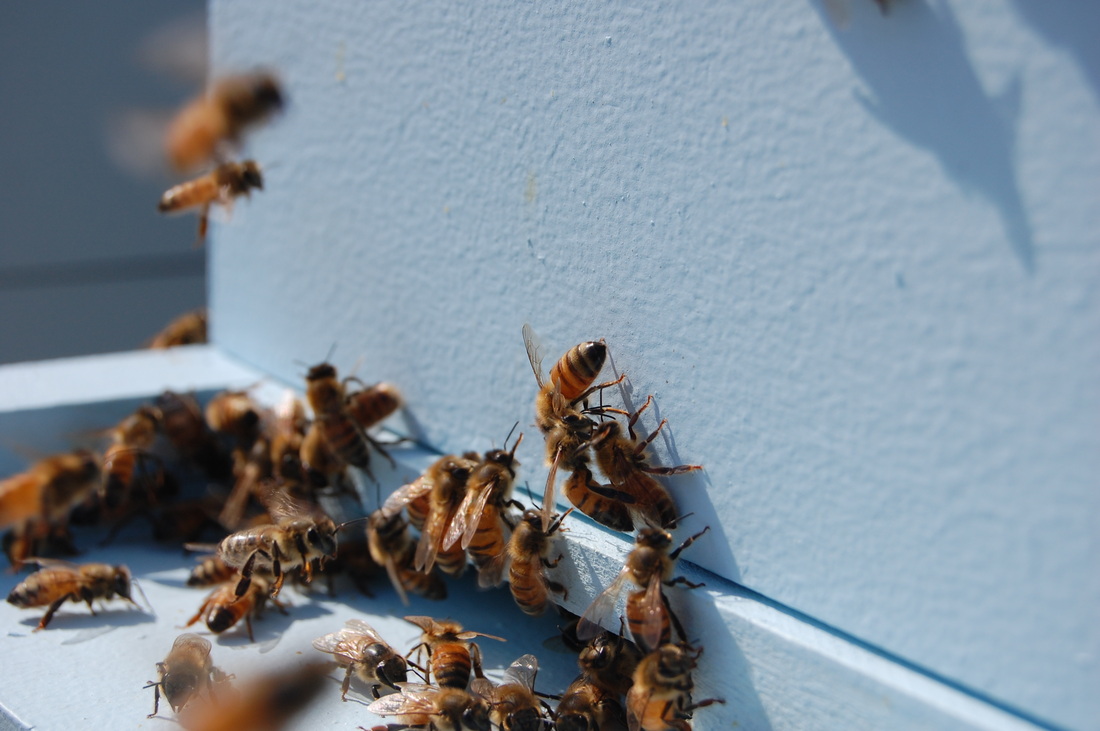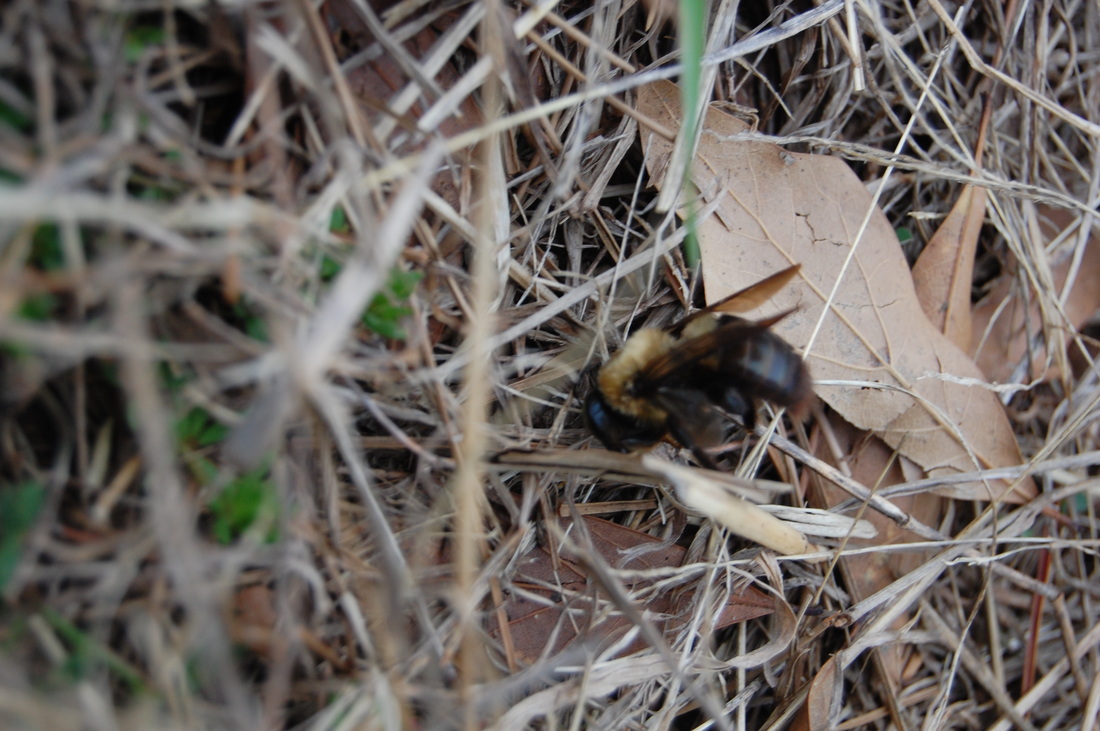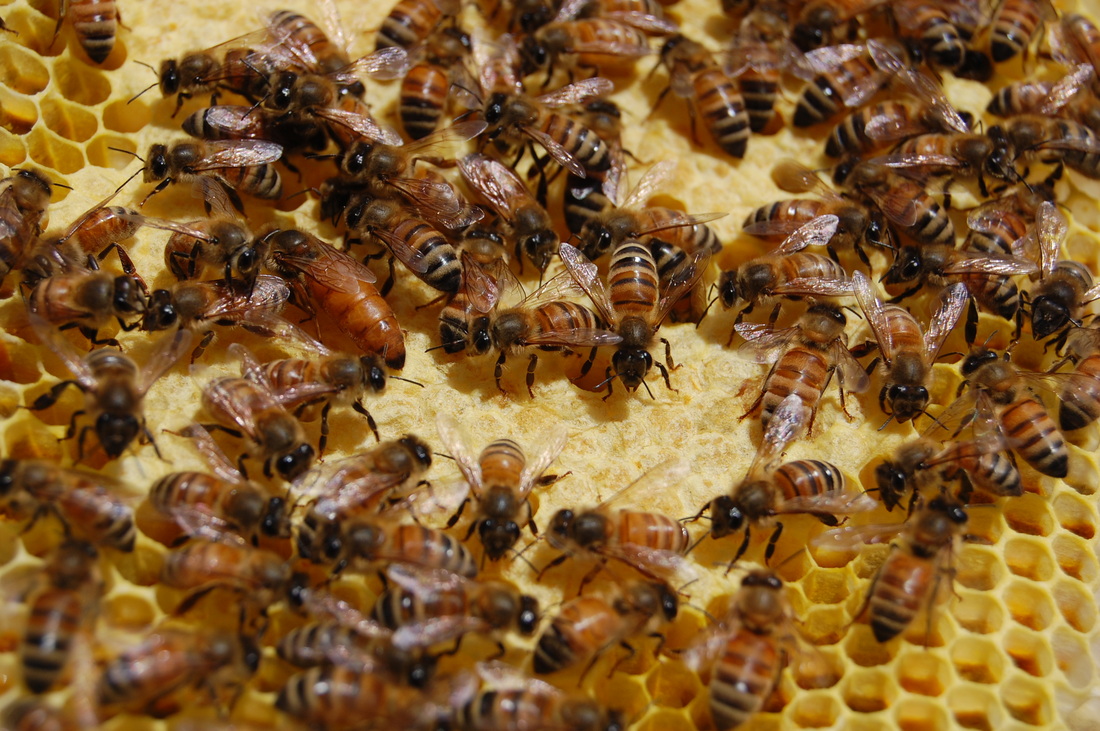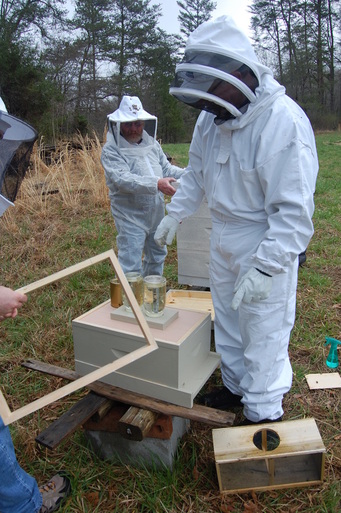|
Elijah, who is 5 1/2 sent me a message by using the ask a beekeeper part of this website. I think I have an interesting answer. "Do bees sting each other on the back or something? I was wondering. I know what bees make -- they make honey!" First a few facts:
There are a few bees, called guard bees that stay near the entrance to protect their hive from intruders. They inspect every bee that enters. They can smell the bee and tell if they are from this hive or another. If a bee from another hive comes to the door with pollen or nectar the guards won't stop them. It's like they are bringing gifts. If a honey bee from another hive comes with nothing the guards won't let them enter. Here a a photo of a the entrance on a busy sunny day. As the hive population grows, I may make the entrance larger, but that will mean they will need more guard bees. If a wasp, bumble bee, or yellow jacket tries to enter the guard bees will not let them in either. They will release a pheromone or a smell to warn the others. It works a lot like a fire alarm warning people there may be a fire. Other bees will come out and attack. These insects may have been trying to rob the hive, by stealing their honey, the bees will attack. One day I found a dead Bumble bee in front of my hive. I wonder if he was trying to steal some honey.
25 Comments
The queen bee likes the darkness of the hive, so sometimes it is hard to find her. I have looked every time that I checked on my bees and hadn't seen her yet. Today was my lucky day. I pulled out frame after frame searching for pollen, nectar, brood, and of course, Miss Royalty. I knew she would be deep in the hive. She was probably laying eggs. I found a few frames full of brood (baby bees). I knew I was getting closer. Then I spotted her. I yelled for T.J. to come and look and a few other beekeepers came to see her too. T.J. snapped a photo and her she is. Can you find which one is the Queen? She has a long abdomen. Here are some things Honey Bees like to eat or drink:
This beekeeper just added his bees to the hive. Since they have no honey they will start with sugar water in the jars. The beekeeper will have to come back and check on his jars to make sure his bees have enough to eat.
|
AmandaStaring at the dancing bees in an observation hive, it hits me. I love how these tiny creatures communicate. It looks like they're having fun dancing around while telling their sisters where to find some nectar. Amanda's Sting Count
2013- 6 stings 2019- 0 Archives
April 2019
Index
All
|




 RSS Feed
RSS Feed
